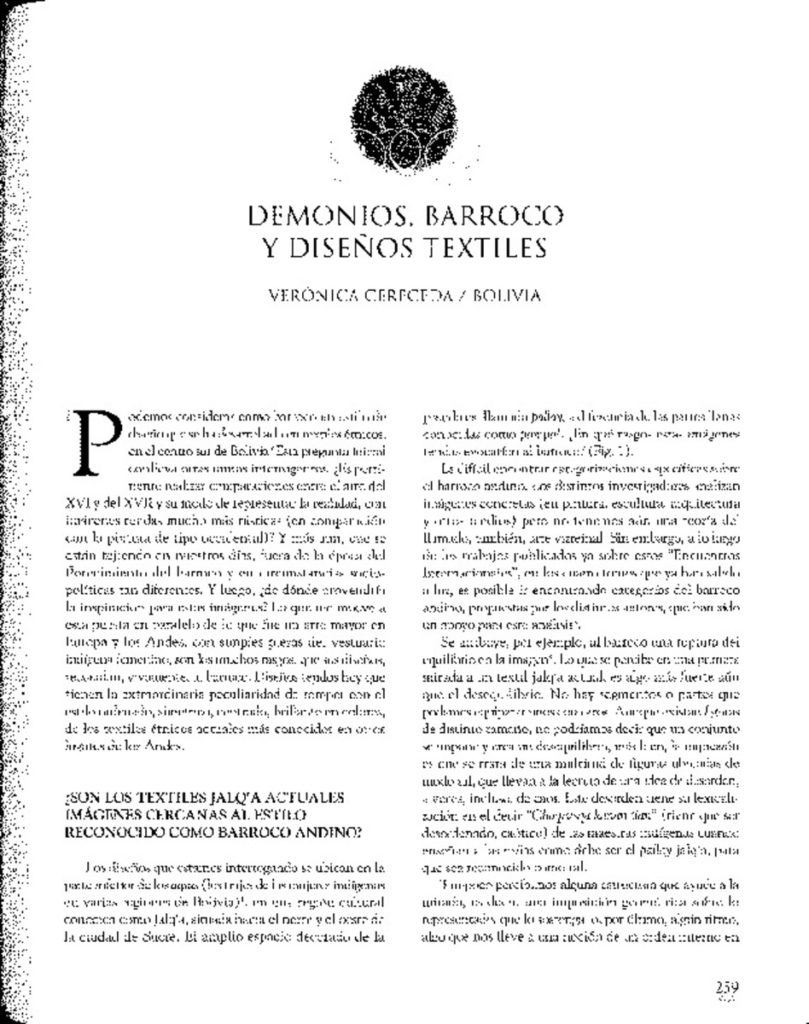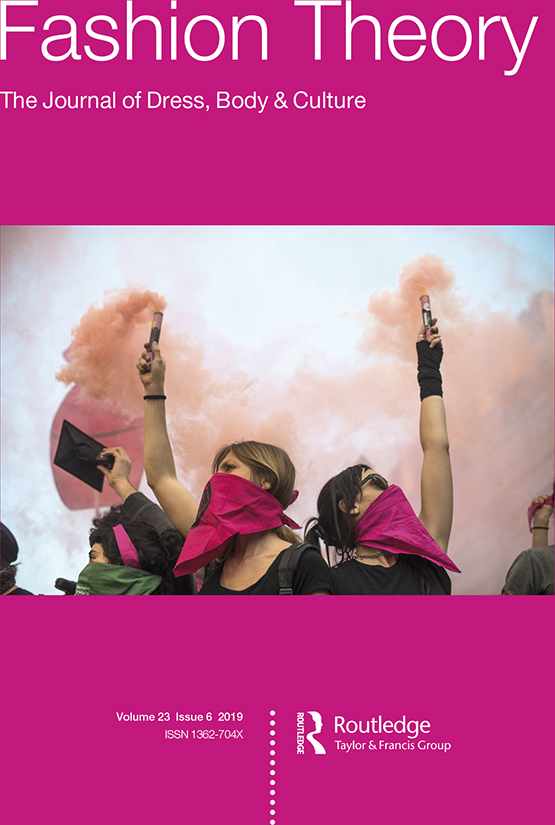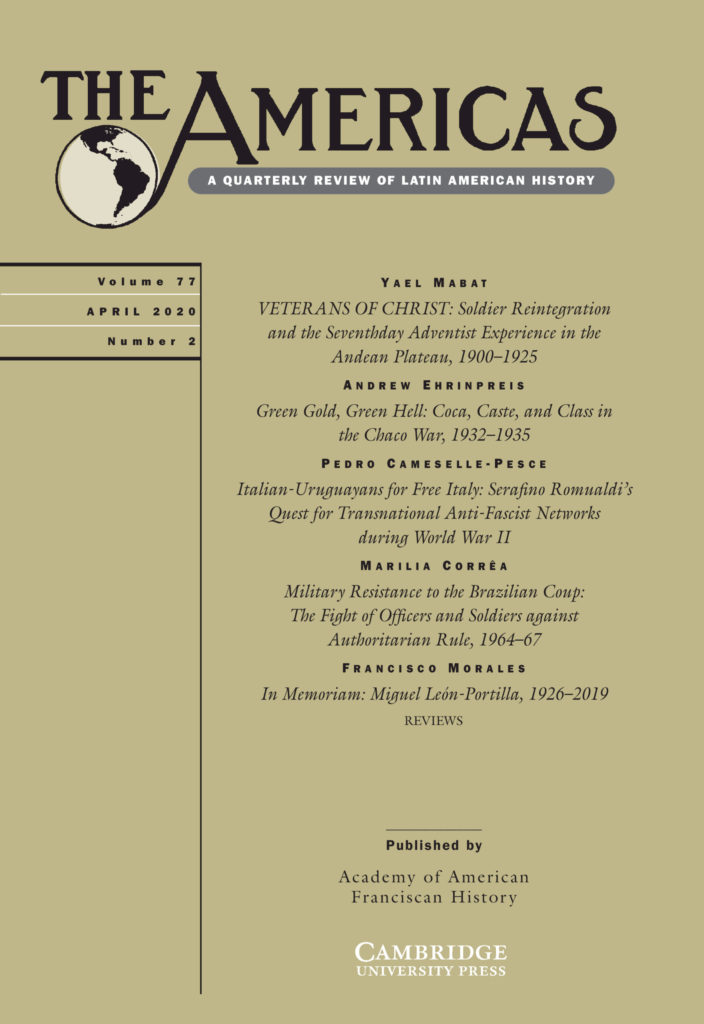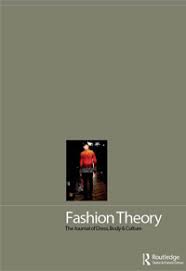
Lo que me mueve a esta puesta en paralelo de 10 que fue un arte mayor en Europa y los Andes, con simples piezas del vestuario indígena femenino, son los muchos rasgos, que sus diseños, recuerdan, vivamente, al barroco. Diseños tejidos hoy que tienen la extraordinaria peculiaridad de romper con el estilo ordenado, simétrico, centrado, brillante en colores, de los textiles étnicos actuales más conocidos en otros lugares de los Andes.
| Autora | Verónica Cereceda | |
| Año | 2011 | |
| Tipo | Artículo Académico | |
| País | Bolivia | |
| Editorial | V Encuentro Internacional sobre Barroco | |
| Descarga | URL | |
| DOI | NA | |
| APA | Cereceda, V. (2011). Demonios, barroco y diseños textiles. V Encuentro Internacional sobre Barroco. |








